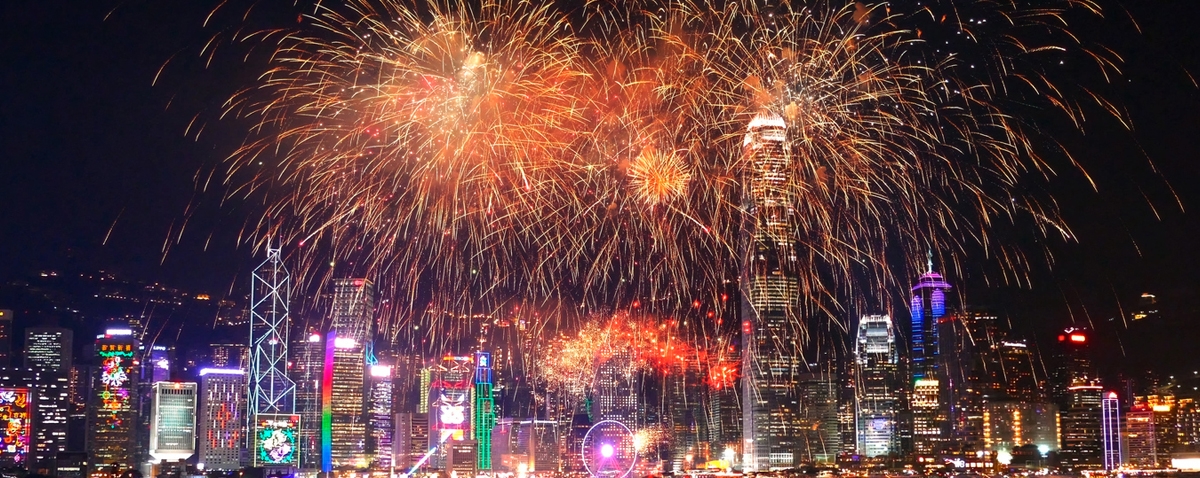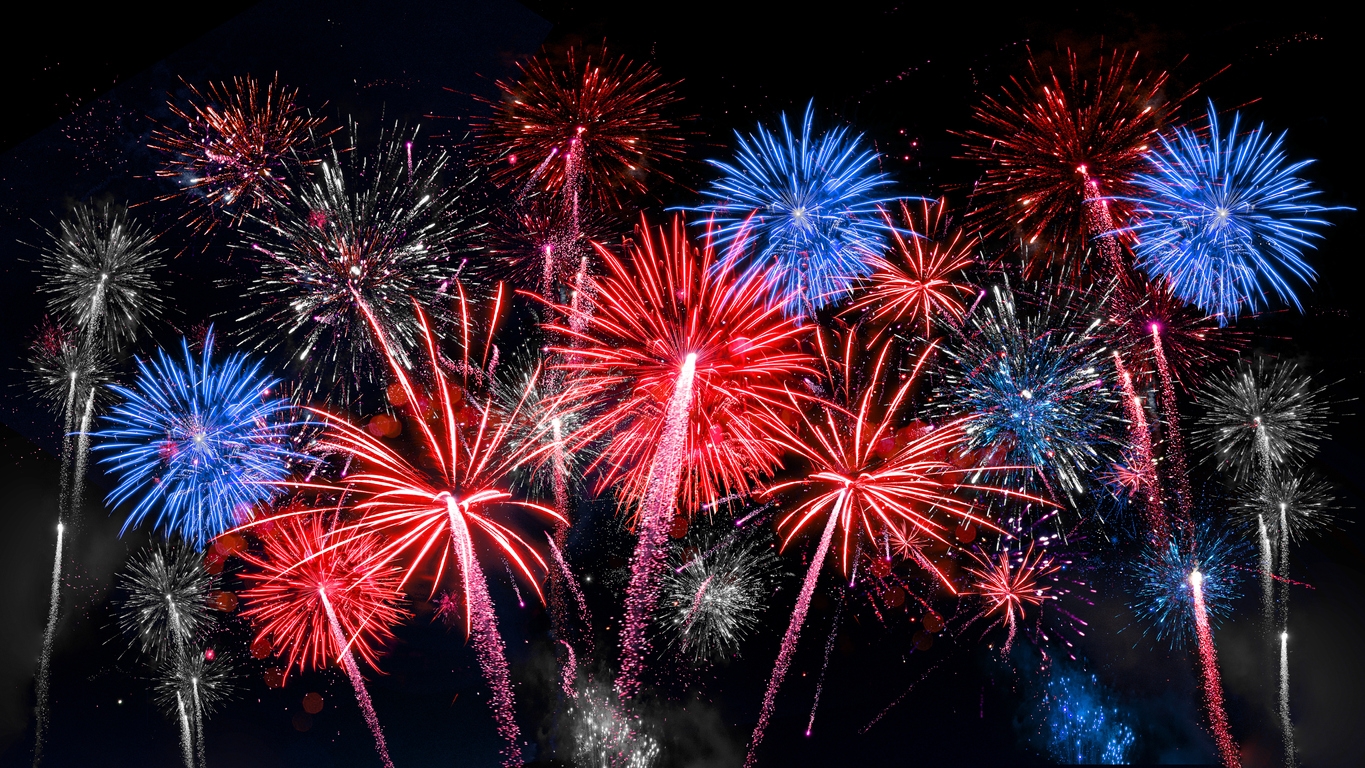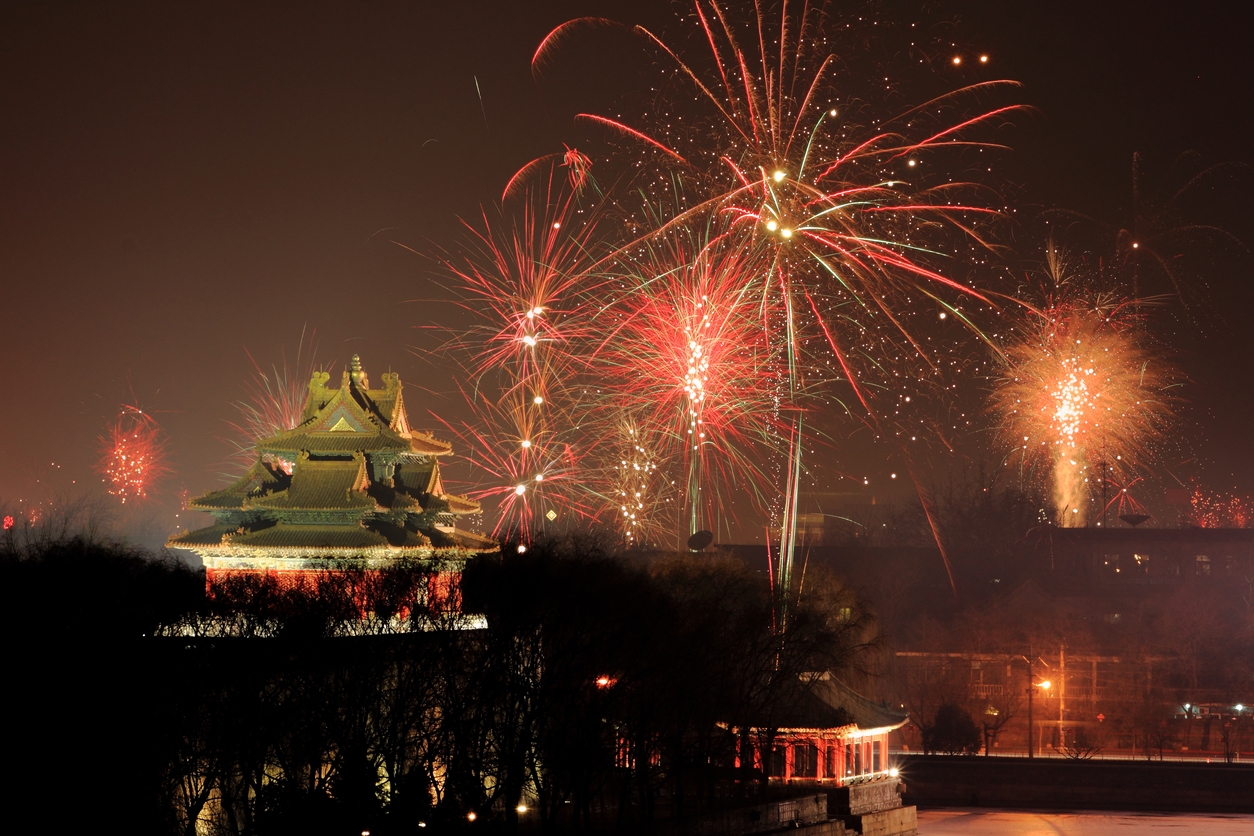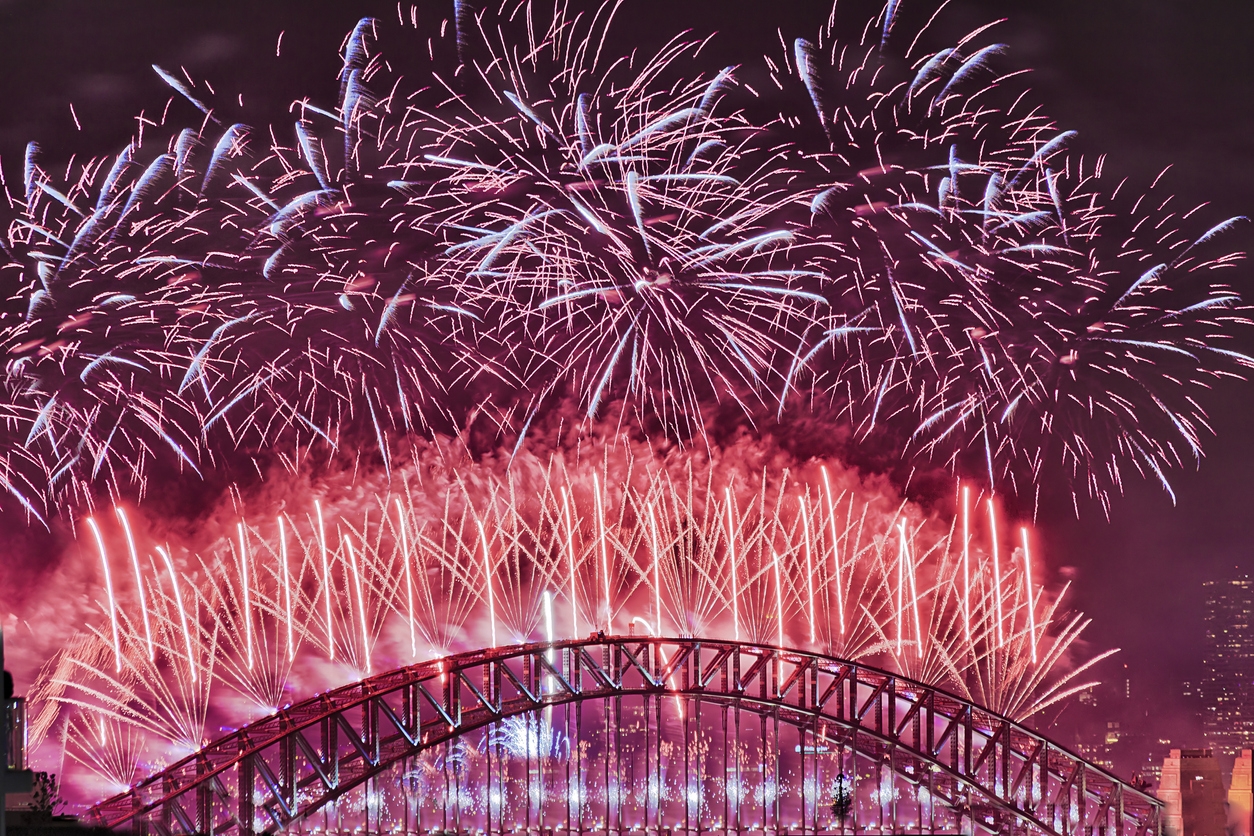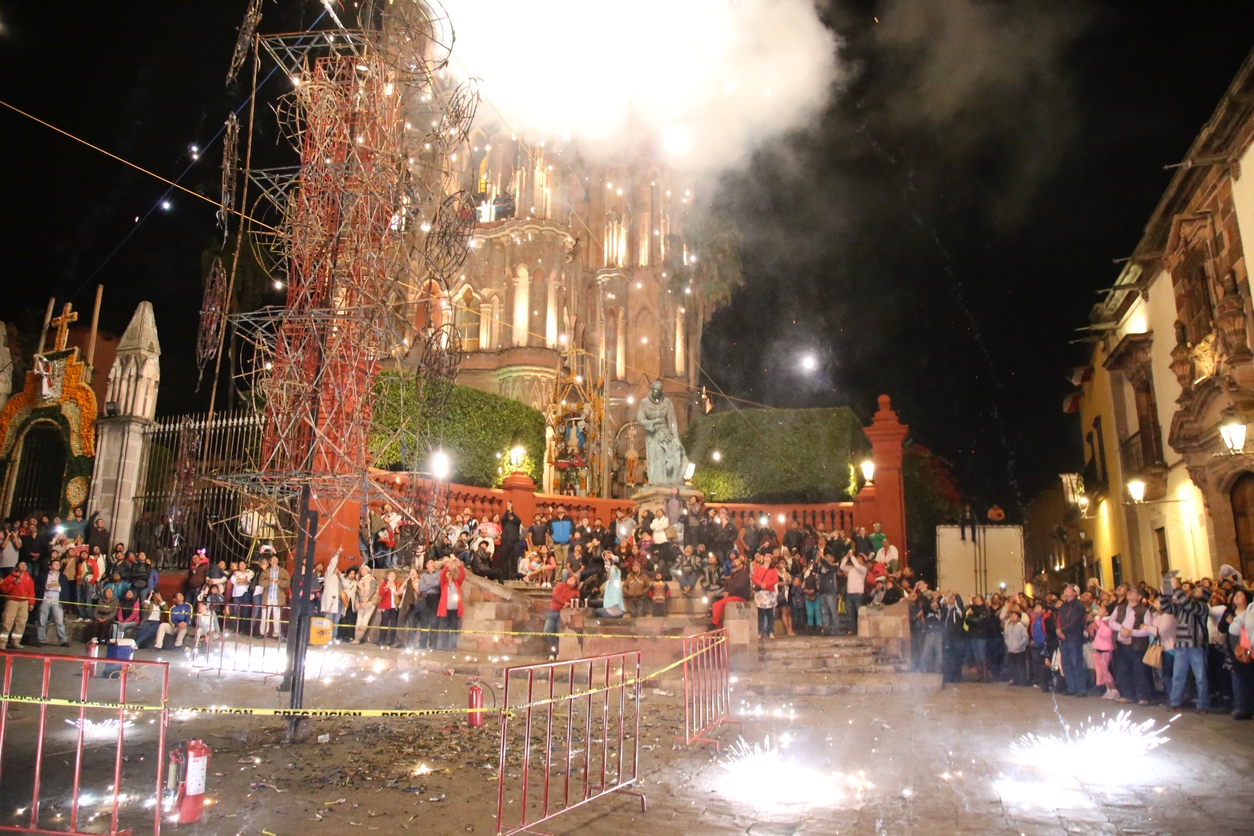Fireworks have captivated people worldwide with their dazzling displays of light and color, filling the night sky with wonder and excitement. These explosive spectacles have a history as vibrant as the sparks they generate, dating back centuries and spanning various cultures. Understanding the origin story of fireworks sheds light on their cultural significance and the remarkable journey that has brought us these awe-inspiring pyrotechnics.
They have been a symbol of festivity and jubilation since the day they originated. Even in the modern-day celebrations, fireworks continue to showcase their brilliance. Let’s explore the intriguing history of fireworks to uncover their roots, evolution, and the diverse traditions they have ignited throughout the world.
Invention in Ancient China
The roots of fireworks are deep, and their journey begins in Ancient China.
Historical Context
The captivating history of fireworks finds its origins in ancient China, around the 2nd century AD. During this time, people stumbled upon an intriguing phenomenon. By roasting bamboo stalks, they noticed that these stalks would darken and emit sizzling sounds. These seemingly ordinary bamboo stalks held a secret. They contained air inside, which, when heated, would cause them to explode. [1] This remarkable discovery gave birth to the Mandarin Chinese word “Baozhu,” meaning “exploding bamboo,” an early term for firecrackers.
As years passed, Chinese chemists began to refine the art of fireworks. They started filling bamboo shoots with gunpowder, an accidental concoction that revolutionized celebrations worldwide. [2] To enhance the visual spectacle, they introduced steel dust or iron shavings, making these early fireworks sparkle and dazzle even further.
Cultural Significance
Fireworks held profound cultural significance in ancient China. Beyond mere entertainment, they played a pivotal role in religious and spiritual ceremonies, symbolizing the connection between humanity and the divine. The explosive bursts of light were believed to ward off evil spirits and bring good fortune, making fireworks an integral part of Chinese cultural heritage. [3] This ancient tradition laid the foundation for the mesmerizing displays we witness in modern fireworks shows, where their visual splendor continues to captivate audiences worldwide.
Spread to the Middle East and Europe
| Time Period | Historical Event |
| 2nd Century | Invention of firecrackers in ancient China |
| 7th Century | Introduction of fireworks to the Middle East |
| 13th Century | Arrival of fireworks in Europe through the Silk Road |
| 16th-17th Century | European adaptation and usage of fireworks |
| 19th-20th Century | Development of colorful and shaped fireworks |
Fireworks’ journey from China to the Middle East and Europe marked a fascinating chapter in their history. This section explores how these dazzling displays traveled along the Silk Road, influencing cultures along the way.
Through the Silk Road
Through the vast Silk Road network, spanning thousands of miles, fireworks found their way beyond China’s borders. [4] Travelers, traders, and explorers who journeyed along this ancient trade route, carried the knowledge of gunpowder and pyrotechnics with them.
They became a symbol of cultural exchange, fostering connections between the East, Middle East, and beyond. This exchange influenced the development of fireworks’ design and composition. As they traveled westward, fireworks underwent adaptations, evolving into various forms and pyrotechnic displays, reflecting the diversity of cultures they encountered.
Arrival in Europe
In Europe, fireworks underwent their own unique adaptation, eventually finding their place in both celebrations and warfare. European cultures put their own twist on fireworks, introducing new pyrotechnic effects and display techniques. [5] These adaptations reflected the diversity of artistic expression across different regions of Europe.
They found their place in celebrations, from royal weddings to national holidays. However, their application was not limited to festivities. Fireworks were also used in warfare, where their dazzling displays served as psychological tools on the battlefield.
Evolution and Innovation
The evolution of fireworks continued with the development of vibrant colors and intricate shapes. The artisans and chemists began to invest more deeply in perfecting their craft. Here’s a closer look at the developments:
Development of Colors and Shapes
Fireworks enthusiasts sought to create more visually stunning displays. They achieved this by introducing a variety of chemical compounds that produced distinct colors when ignited.
| Time Period | Firework Colors |
| Ancient China | Simple bright flashes |
| Medieval Europe | Introduction of gold and silver colors |
| 19th Century | Development of vivid colors |
| 20th Century | Introduction of multi-colored fireworks |
By carefully controlling the composition and timing of these chemicals, they could craft intricate shapes and patterns in the night sky. This innovation transformed fireworks from simple bursts of light and sound into captivating visual experiences.
| Shape | Description |
| Peony | A spherical burst with a glittering center |
| Willow | Long, trailing strands resembling a willow tree |
| Palm | A burst that spreads outward like a palm tree |
| Chrysanthemum | A spherical burst with petals radiating outward |
| Ring | A circular burst with a defined center |
Discovery of New Chemicals
Over time, chemists identified new substances that, when added to fireworks compositions, produced richer and more vibrant colors. These discoveries allowed for a broader spectrum of hues, from deep blues to vivid reds, oranges, and greens. It also led to the creation of multi-colored fireworks, adding complexity and beauty to the displays.
| Chemical Compound | Color Produced |
| Strontium salts | Deep red |
| Barium salts | Green |
| Copper compounds | Blue and green |
| Sodium compounds | Yellow |
| Lithium compounds | Red and pink |
| Calcium compounds | Orange |
Experimentation and Enhancement
The pursuit of perfection in fireworks displays drove relentless experimentation. Pyrotechnicians tirelessly tested different combinations of chemicals, fuses, and structures to achieve more impressive and synchronized shows. Techniques for launching fireworks at precise altitudes, creating symmetrical designs, and choreographing entire displays with music became more refined.
This phase marked a crucial transition from the rudimentary firecrackers of ancient China to the awe-inspiring fireworks extravaganzas we witness today, where each explosion in the night sky is a testament to centuries of innovation and dedication.
Fireworks in the Modern Era
Fireworks have tremendously evolved from the ancient civilizations to modern ages. The modern era has seen fireworks evolve into a global celebration tradition, uniting people across borders in awe and wonder.
Worldwide Celebrations
They illuminate the night skies on various occasions, adding splendor to:
Celebration | Country/Region | Significance |
Independence Day | United States | Commemorates the Declaration of Independence. Celebrated on July 4th. |
Bastille Day | Bastille Day | Marks the storming of the Bastille prison during the French Revolution. July 14th. |
Diwali | India and others | Festival of lights, symbolizing the triumph of light over darkness. |
New Year's Eve | Worldwide | Welcoming the new year with fireworks at midnight. |
Lunar New Year | Various Asian nations | Celebrates the beginning of the lunar calendar year. |
National Holidays
Fireworks light up the skies during national celebrations, symbolizing unity and patriotism. They have become synonymous with national celebrations, such as the Fourth of July in the United States, Bastille Day in France, and Canada Day, where magnificent displays light up the night sky in a patriotic spectacle.
Festivals and Events
Numerous festivals and events worldwide incorporate fireworks into their celebrations. Festivals like Diwali in India and cultural events like the Lunar New Year in Asia often feature grand fireworks displays as a symbol of joy and new beginnings. Other examples include New Year’s Eve celebrations in cities like Sydney, Rio de Janeiro’s Carnival, and the stunning pyrotechnics at the Olympics’ opening and closing ceremonies.
Advancements in Technology
Advancements in Technology have played a significant role in enhancing the fireworks experience.
Computer-Controlled Displays
In recent times, we’ve witnessed a shift from traditional, manually ignited displays to computer-controlled marvels. These sophisticated systems allow for precise synchronization and choreography, transforming night skies into mesmerizing canvases.
Modern fireworks displays are meticulously orchestrated using computer technology. This allows for precise harmony of explosions, creating stunning visual effects and intricate patterns. [6]
Eco-Friendly Fireworks
To address environmental concerns, eco-friendly fireworks have been developed. These fireworks produce fewer pollutants and are designed to minimize their impact on the environment, ensuring that the beauty of fireworks can be enjoyed without harm to nature. [7]
Safer Firing Systems
Furthermore, advancements in firing systems have improved safety and precision. Electronic firing systems offer reliable ignition, reducing the risk of accidents. Moreover, wireless technologies enable remote control, enhancing the choreography of large-scale displays.
These technological strides have not only elevated the art of fireworks but also made them more accessible and sustainable. As a result, they continue to dazzle audiences around the world while contributing to a greener and safer future.
Cultural Significance and Traditions
Fireworks are more than just dazzling displays of light and sound. Across the globe, these explosive spectacles hold diverse meanings, weaving themselves into the fabric of societies. From ancient rituals to modern celebrations, fireworks have become an integral part of our collective human experience.
Symbolism
As these pyrotechnic marvels light up the sky, they convey more than just beauty, they represent profound symbolism rooted in cultures worldwide. For example, in the rich history and culture of Mexico, fireworks are a symbol of commemoration during the Day of the Dead. The meaning behind each explosion, each hue, transcends mere spectacle, delving into the very essence of human beliefs and traditions.
| Region | Firework Symbolism |
| China | Symbolizes joy, happiness, and good luck. |
| USA | Represents celebration, freedom, and patriotism. |
| India | Signifies victory, light conquering darkness (Diwali). |
| Japan | Associated with festivals and warding off evil spirits. |
| Mexico | Symbol of commemoration during the Day of the Dead. |
| France | Marks Bastille Day, a symbol of liberty and equality. |
| UK | Celebrates Guy Fawkes Night, a historical event. |
| Italy | Tradition during religious feasts and celebrations. |
| Brazil | Integral to Carnival, symbolizing revelry and fun. |
Art and Entertainment
Fireworks transcend the realm of the night sky, they inspire creativity, evoke emotions, and leave indelible marks on art and entertainment. From the painter’s canvas to the pages of literature and the silver screen, fireworks have become iconic symbols of fleeting beauty, joy, and the boundless human spirit. In the world of art and entertainment, they ignite imaginations and inspire awe in countless ways.
Category | Representation |
Paintings |
|
Literature |
|
Film |
|
Music |
|
Performing Arts |
|
Video Games |
|
Conclusion
The history of fireworks is a captivating journey through centuries. These luminous displays originated with bamboo explosions in China, later evolving into the firecrackers we know. Spread through the Silk Road, fireworks adapted and found their place in religious ceremonies and later European celebrations. Over time, fireworks developed in colors, shapes, and chemical compositions, enhancing their brilliance.
In the modern era, they light up worldwide events, from national holidays to festivals. Advancements like computer-controlled displays and eco-friendly options have transformed their production. Beyond their visual spectacle, fireworks hold deep cultural significance, symbolizing joy and celebration across various cultures. They also feature prominently in art, literature, and film, serving as powerful metaphors for human creativity and wonder. In essence, fireworks continue to unite people worldwide, bridging gaps with their brilliance and inspiring awe, no matter the occasion or medium of expression.
References
- Admin, M. (n.d.). History of fireworks. Home. https://www.celebratesafely.org/history-of-fireworks
- The evolution of fireworks. (2017, May 18). Smithsonian Science Education Center. https://ssec.si.edu/stemvisions-blog/evolution-fireworks
- Chinese new year firecrackers: Why set off and meaning. (2022, November 9). China Highlights: Private & Worry-Free China Tours. https://www.chinahighlights.com/travelguide/festivals/chinese-new-year-firecrackers.htm
- How fireworks became a Fourth of July tradition. (2022, June 29). Lifehacker. https://lifehacker.com/how-fireworks-became-a-fourth-of-july-tradition-1849120838
- Werrett, S. (2014, December 31). A history of fireworks: How about some flaming artichokes to blast in the new year? The Conversation. https://theconversation.com/a-history-of-fireworks-how-about-some-flaming-artichokes-to-blast-in-the-new-year-33751
- Lott, J. (2021, January 18). Fireworks and computers: How modern programming revolutionized pyrotechnics. EPC. https://epcglobalsolutions.com/fireworks-and-computers-how-modern-programming-revolutionized-pyrotechnics/
- Are environmentally friendly fireworks really “Green” for air quality? A study from the 2019 national day fireworks display in Shenzhen. (n.d.). PubMed. https://pubmed.ncbi.nlm.nih.gov/33655755/

